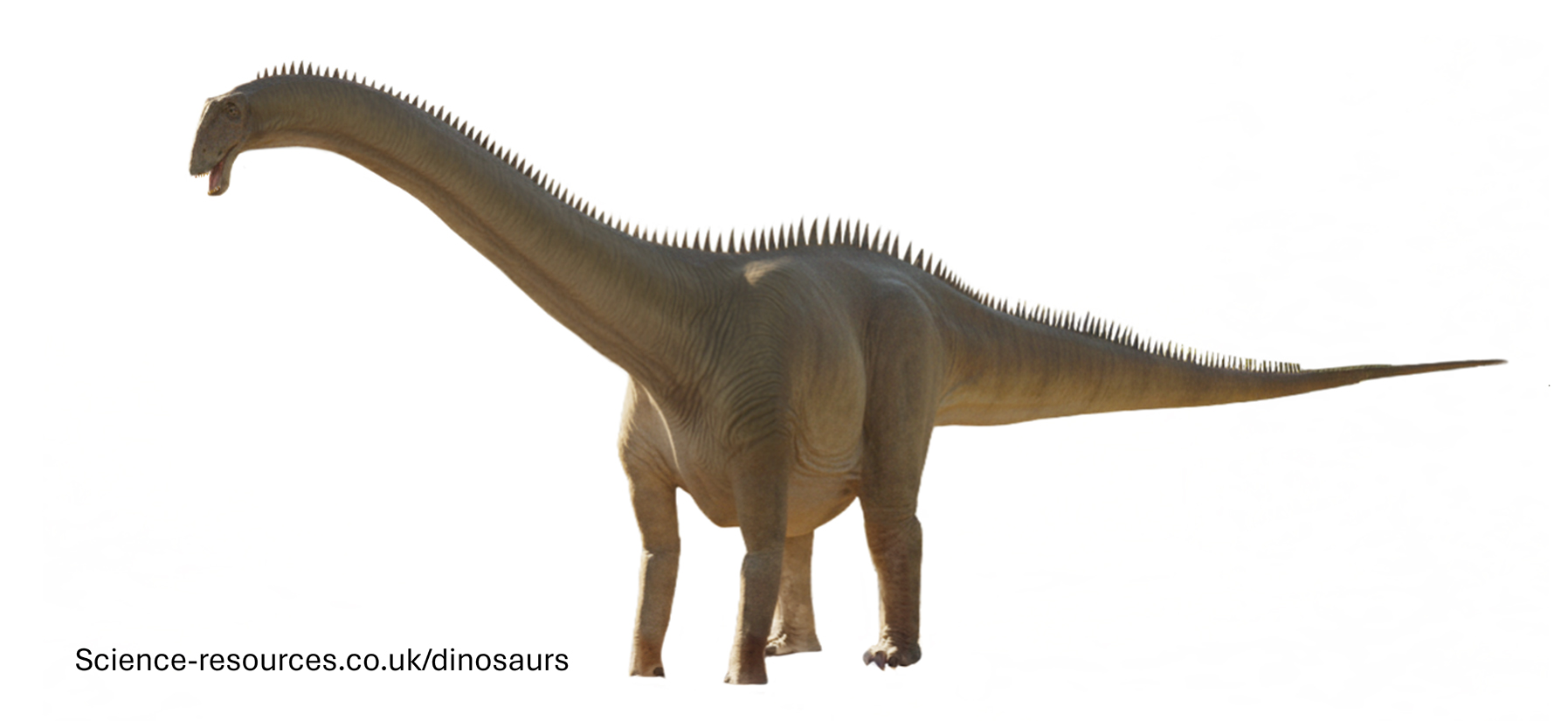Dinosaurs A:Z | D
You may also be intrested in: Free Dinosaur games
Dinosaurs: Diplodocus (Double Beam)
You may also be intrested in: Free Dinosaur games
Last updated: 19th Mar 2024 Diplodocus was a massive, plant-eating dinosaur that roamed the Earth during the Late Jurassic Period, around 155 to 145 million years ago. This dinosaur is renowned for its long neck and tail, making it one of the longest dinosaurs ever discovered! Height: Diplodocus could stand up to 4.6 metres (15 feet) tall at the hips. Length: They could grow up to 27 metres (90 feet) long, almost the length of three school buses lined up. Weight: Diplodocus weighed between 12 to 15 tons, comparable to the weight of two to three African elephants. Diplodocus had a long, slender neck and an equally long, whip-like tail. Its body was relatively low to the ground, supported by sturdy legs. Unlike Brachiosaurus, Diplodocus had front legs that were slightly shorter than its back legs. Its teeth were peg-like, perfect for stripping leaves off branches. Diplodocus Generative AI Notification: Some elements of this image have been created or enhanced using AI technology. To find out how we create all our dinosaurs, click here. Diplodocus was a herbivore, meaning it only ate plants. It used its long neck to reach leaves high in the trees and its peg-like teeth to strip leaves. Diplodocus did not chew its food; instead, it swallowed it whole and used gastroliths, or stomach stones, to help grind down the food in its stomach. Fossils of Diplodocus have been found in North America, particularly in the western United States. Diplodocus lived in lush, green environments filled with coniferous trees, ferns, and other vegetation. What is a Diplodocus?
How big was Diplodocus?
Appearance

What did Diplodocus eat?
Where did Diplodocus live?
Pronounced: DIP-low-DOCK-us Name Means: "Double Beam"


Diplodocus Facts
Length: 27 metres (90 feet)
Height: 4.6 metres (15 feet)
Weight: 12 to 15 tons (12,000 - 15,000 kg)
Diet: Herbivore (Plants)
Time: Late Jurassic Period (155 to 145 million years ago)
Habitat: Dense forests and open
woodlands
Fossils Found: North America
Intersting Facts
Why was Diplodocus so big?
One theory is that Diplodocus's large size helped deter predators like Allosaurus. Another theory suggests that a large digestive system was necessary to process the vast amounts of low-nutrient plants it consumed.
Diplodocus FAQ
Q1: What is a Diplodocus?
A1: Diplodocus is a genus of large, herbivorous dinosaurs that lived during the Late Jurassic period, around 155 to 145 million years ago. It is known for its long neck and tail.
Q2: How big was Diplodocus?
A2: Diplodocus could grow up to 25 meters (82 feet) in length and weigh around 15 metric tons (16.5 short tons).
Q3: What did Diplodocus eat?
A3: Diplodocus was a herbivore, feeding on plants. It likely ate leaves from trees and other vegetation.
Q4: Where have Diplodocus fossils been found?
A4: Fossils of Diplodocus have been discovered in North America, particularly in the western United States.
Q5: Did Diplodocus have any special features?
A5: Yes, Diplodocus had a long neck and tail, and its vertebrae were uniquely shaped to support its massive size. It also had peg-like teeth suited for stripping leaves from branches.
Q6: How did Diplodocus move?
A6: Diplodocus was quadrupedal, meaning it walked on all four legs. Its long tail helped balance its body as it moved.
Q7: What is the significance of Diplodocus in dinosaur studies?
A7: Diplodocus is significant because it provides insights into the anatomy and behavior of sauropod dinosaurs, and its well-preserved fossils help scientists understand how these giants lived.
Q8: Did Diplodocus have any predators?
A8: Yes, Diplodocus likely had predators, including large theropod dinosaurs like Allosaurus that lived during the same period.
Q9: How do scientists study Diplodocus fossils?
A9: Scientists use various techniques to study Diplodocus fossils, including CT scans to examine bone structure and computer modeling to understand its movement and feeding habits.
Q10: What have recent studies revealed about Diplodocus?
A10: Recent studies have shown that Diplodocus might have used its tail as a whip to defend itself and that it replaced its teeth frequently to cope with wear from eating tough vegetation.
You may also be intrested in:
- How we create our dinosaurs
- How big were dinosaurs
- Dinosaurs: A-Z
Tags: How big was Diplodocus, Diplodocus size, where does Diplodocus live, how tall are Diplodocus, what does Diplodocus mean, Diplodocus, Diplodocus facts